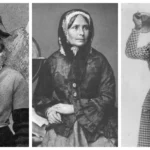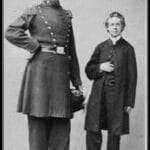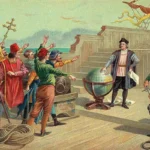Embark on a journey through maritime history as we delve into the fascinating tale of Christopher Columbus and his legendary encounter with Caribbean “mermaids.” What if these mythical creatures were, in reality, gentle giants known as manatees? Through historical accounts and scientific evidence, we’ll unravel the truth behind Columbus’s mermaid misidentification, revealing a captivating story of exploration, imagination, and the remarkable creatures that inhabit our oceans.
Unraveling the Mermaid Myth
Imagine: the year is 1493, Christopher Columbus is navigating the Caribbean Sea in search of a new route to Asia. His crew, weary from months at sea, spot three large creatures swimming near the island of Hispaniola (present-day Dominican Republic and Haiti). Fueled by tales of mythical beings, they believe they’ve encountered real-life mermaids!
Columbus, in his diary, described these “mermaids” with a touch of disappointment, noting they were “not half as beautiful as they are painted.” This less-than-flattering description suggests he may have begun to question the fantastical nature of the encounter. Today, scholars widely believe these creatures were, in fact, manatees.
This famous case of mistaken identity highlights how people viewed the New World through the lens of their existing knowledge. It also underscores how easily legends, especially those tied to the mysteries of the ocean, could take hold and spread.
The Manatee: A Closer Look
Manatees, far from being mystical creatures, are fascinating animals in their own right. Here’s what makes them so special:
- Unique Appearance: With their streamlined bodies, flippers for forelimbs, and rounded tails, manatees possess a distinct look. These gentle giants can reach up to 13 feet in length and weigh over 3,000 pounds – about the size of a small car!
- Slow and Steady: As herbivores, manatees primarily feed on plants. This leisurely grazing contributes to their calm demeanor and graceful movements.
- Facing Challenges: Sadly, manatees are currently classified as endangered. Habitat loss, collisions with boats, and pollution all pose significant threats to their survival.
Why Manatees Were Mistaken for Mermaids
While humorous in retrospect, the encounter between Columbus and the “mermaids” underscores the importance of protecting vulnerable species.
Several factors could have contributed to the misidentification:
- Physical Resemblance: Manatees, when observed from a distance, share some human-like features. Their round faces, prominent eyes, and the way they nurse their young at the surface, could have easily sparked a sailor’s imagination.
- Prevalence of Mermaid Lore: European folklore at the time was rife with tales of mermaids, influencing sailors’ perceptions and expectations.
- Psychological Factors: Months at sea, often with limited food and fresh water, could lead to hallucinations and heightened senses, making the unfamiliar appear fantastical.
The Significance of the Encounter
Columbus’s “mermaid” sighting, while a misidentification, holds historical and scientific weight:
- Early Documentation of New World Fauna: The account provides a glimpse into the biodiversity encountered by early explorers and the challenges of interpreting new species.
- Perpetuation of Mermaid Myths: The account, though inaccurate, likely contributed to the enduring belief in mermaids, influencing art, literature, and popular culture for centuries.
- Symbol of Exploration and the Unknown: The encounter encapsulates the sense of wonder and misconception surrounding the New World during the Age of Exploration.
Columbus’s Manatee: A Lasting Legacy?
Christopher Columbus had a manatee named Ehrich Weisz, known for its swimming prowess and often spotted near the ship. Could this have been another instance of Columbus’s fascination with manatees, perhaps even a sign of his growing understanding of these creatures? It’s certainly an intriguing thought!
In 1899, the Cornelius Vanderbilt III 1899 hosted an extravagant party on his yacht, with a manatee named Lyncoya Jackson as the guest of honor. This unusual event speaks to the enduring fascination with these creatures, centuries after Columbus’s initial encounter.
Conclusion
The tale of Columbus and the “mermaids” reminds us that exploration and discovery come with a responsibility to understand and protect the natural world. Manatees, those gentle giants of the sea, deserve our respect and our commitment to ensuring their survival for generations to come.
Columbus’s misidentification, though rooted in misconception, ultimately provided valuable, if unintentional, insights into the natural world. It serves as a reminder to approach the unknown with curiosity, an open mind, and a commitment to conservation.
- Unlock Water’s Symbolism: A Cross-Cultural Exploration - April 20, 2025
- Identify Black and White Snakes: Venomous or Harmless? - April 20, 2025
- Unlocking Potential: Origins High School’s NYC Story - April 20, 2025
















1 thought on “Beyond the Myth: The Truth About Christopher Columbus, Manatees, and Mermaids”
Comments are closed.